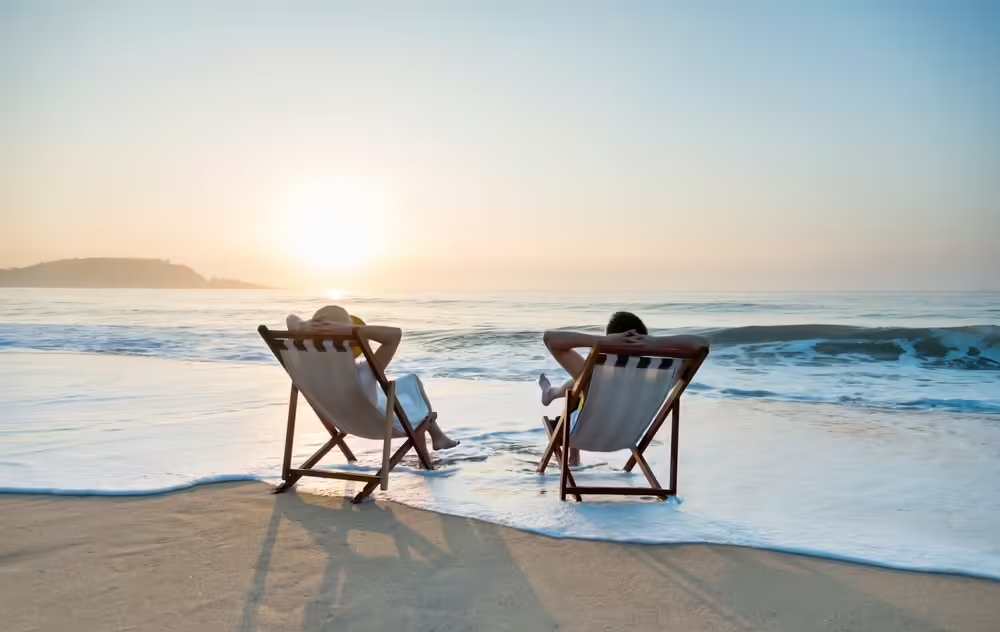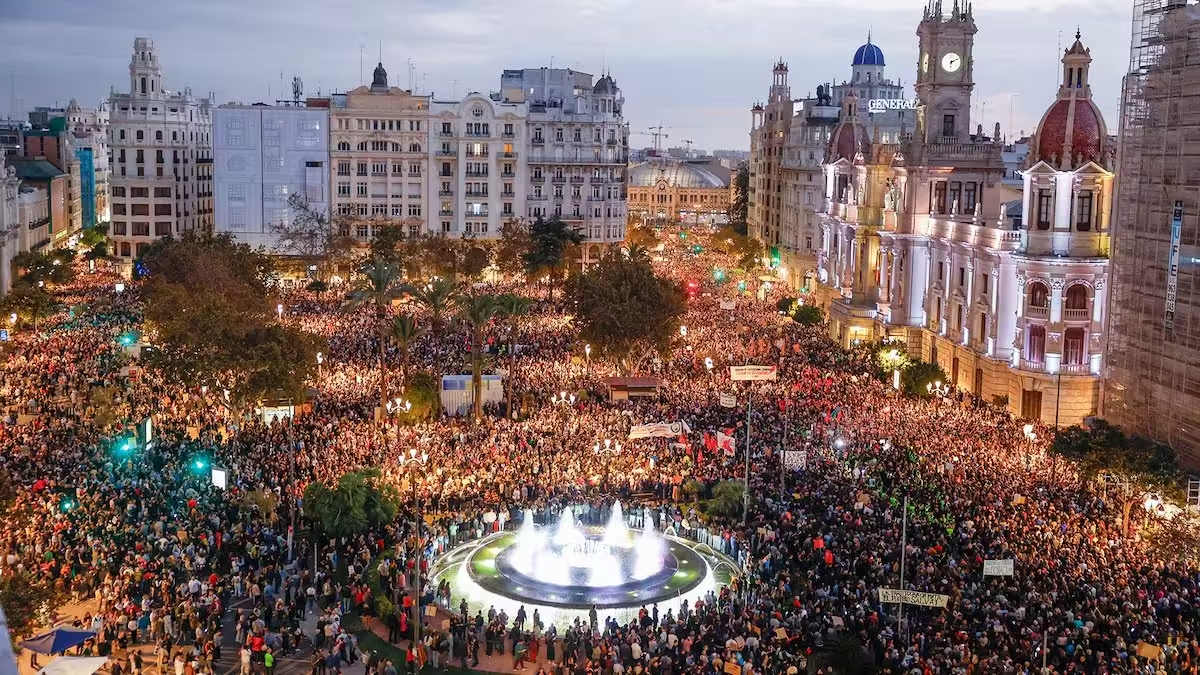How to Survive August in Spain
August in Spain can feel like a test of endurance. Whether you’re on the coast or inland, the country turns up the heat, literally. Temperatures often soar above 35°C (95°F) on the coast and can hit 40°C (104°F) in inland areas. Add high humidity in coastal regions, and suddenly walking to the corner shop feels like a mini triathlon.
It’s not just the weather you have to contend with. August is holiday season, which means tourists everywhere. Beaches are crowded, towns are busy with visitors, and even the quiet villages can feel like a festival. Parking? Good luck. Waiting for a table at a café? Be prepared to queue in some areas.
Spain in August takes strategy, patience, a willingness to adopt some peculiar customs, and don’t even think about blow-drying your hair!
The Weather: Heat, Humidity, and the Art of Staying Cool
The most obvious challenge of August is the weather. Along the coast, cities like Alicante, Murcia, and Valencia regularly see temperatures around 35°C (95°F). Combine that with humidity from the sea, and even doing some everyday housework can leave you sticky and exhausted. Inland, in regions like Castilla-La Mancha, Extremadura, and Andalucía, the heat is more severe, with thermometers often exceeding 40°C (104°F). Nights rarely cool off completely, leaving apartments sweltering without fans or air conditioning.
Spanish homes are adapted to survive this heat. Heavy blinds, or las persianas, stay firmly shut during daylight hours to block out the sun. Thick walls and tiled floors naturally help keep interiors cooler, while balconies and terraces become micro-ecosystems for morning chores before the day becomes unbearable. Many locals also move small fans from room to room, or strategically place them near windows to create cross-ventilation, and air conditioning is considered a necessity in the hotter areas.
Streets, Paths, and Walking in the Heat
Walking the streets in August is an art form. Narrow paths bake under the sun, and high walls between buildings trap heat like ovens. Locals tend to walk in the middle of quieter streets. Not only does this help avoid the scorching heat radiating from walls and parked cars, but even the tiniest breeze feels like relief when you’re stepping away from heat-trapping surfaces. In smaller towns, it’s common to see people strolling slowly in the centre of residential streets, chatting with neighbors or carrying groceries, seemingly at odds with the chaos of traffic but entirely practical.
Siesta Culture and Daily Routines
August amplifies Spain’s famous siesta culture. It’s almost impossible to live and work in August without having a siesta. Shops, offices, and even some restaurants, depending on the area, shut down from roughly 2 p.m. to 5 p.m. The world goes quiet, streets are empty, and the heat becomes almost unbearable for anyone outdoors. Locals retreat indoors to rest, read, or enjoy cold drinks, and it’s often the only practical time to slow down.
Morning hours, before the sun reaches its peak, are when life truly moves. Spanish people tackle housework early: washing floors, tidying terraces, scrubbing windows, or doing laundry before the day gets too hot. Even the timing of meals adjusts; dinner is pushed to 9 p.m. at the earliest, but it is quite normal to see people sitting down to dinner at 11 p.m. when the air has cooled slightly.
Pets and Street Care
Looking after pets in August requires extra attention. Walking them during peak heat is dangerous, so early mornings or late evenings are preferred. Temperatures can rise so high that paths and sand can burn paws within minutes. Locals often test the ground with their hand or bare foot before letting dogs walk, making sure it’s safe. Never leave pets in cars, even for a few minutes; the interior can reach life-threatening temperatures quickly. Hydration is essential: water bowls should always be available, and shaded rest spots are ideal when outdoors.
Spanish dog owners have an acute awareness of how heat affects public spaces. In August, cleaning up after dogs goes beyond picking up poo. Pee spots are quickly hosed down or cleaned to prevent streets from becoming sticky, smelly hazards in the baking sun. It’s common to see residents armed with water bottles when walking their dogs, keeping the paths hygienic for everyone. Even in tourist-heavy towns, locals are vigilant about this, maintaining a standard of care that might surprise first-time visitors.
Beaches, Tourism, and the August Invasion
Beaches are, of course, very busy in August in Spain. By 10 a.m., sand stretches are crowded with sunbathers, families, and tourists, all vying for a shade or a spot near the water. Inland, small towns hosting festivals or historic sites experience similar influxes, with parking scarcity, long queues at restaurants, and crowded streets.
Locals have developed strategies to avoid the chaos. Early morning beach trips or late evening swims are preferred, while towns are often explored during the early hours when temperatures are manageable. For residents living near the coast, the strategy can include choosing less popular coves, walking farther down the beach, or timing visits to coincide with ebbing tides when sand is firmest and easier to navigate.
Evening Life: Streets Come Alive
As the sun dips below the horizon, Spain’s evening and nightlife awaken. Residents bring deck chairs into the street to sit, chat, and enjoy the cooler air. Some even move televisions or other furniture into gardens and patios, creating outdoor living rooms to watch shows or sports under the night sky. The evening paseo, a stroll through the town or along the beachfront, is a ritual. Streets empty in the afternoon, refill with families, couples, and groups of friends walking, eating, or simply soaking in the atmosphere. Cafés buzz again, music drifts from bars, and the heat softens enough to make the night magical.
Food, Drinks, and Eating in August
August dining habits are another survival tactic. Meals are lighter and colder when possible: gazpacho and salmorejo (cold tomato soups), fresh salads, and seafood dominate menus. Tapas culture thrives late into the evening, often accompanied by chilled drinks like tinto de verano or iced sangria. Meals happen late because eating heavily during the peak heat would be exhausting. Even in homes, the kitchen is often avoided during the hottest hours, with pre-prepared meals or quick, cold dishes preferred.
Hydration is constant. Water, fresh fruit, iced drinks, and even watermelon or melons are staples. Many locals carry reusable water bottles, sipping steadily throughout the day rather than waiting until thirst strikes, which is a critical survival tactic in intense heat.
Housework, Shopping, and Errands
Despite the heat, August is not a month to ignore daily responsibilities. Morning housework is common, but so is shopping. Markets and stores are generally quieter early in the day, avoiding the crush of tourists and midday temperatures. Spanish people often stagger tasks: early morning errands, midday rest, and evening outings. Even mundane chores, like picking up groceries or cleaning terraces, are scheduled strategically to avoid the worst of the heat.
Local Festivals and Small Traditions
August is festival season in Spain. Coastal towns hold seafood festivals, inland villages celebrate their patron saints, and fireworks light up warm summer nights. These events are part of the rhythm of Spanish summer: locals do chores and rest during the hottest hours, then enjoy the celebrations in the cooler evenings, often with cold drinks and plenty of shade. Some festivals begin around 6 a.m., you’ll know all about it when they wake you up with drums and fireworks! Festivals are fun, social, and a perfect way to experience the energy of August in Spain.
Surviving August: Tips and Tricks
- Hydrate constantly: Water, iced drinks, and fresh fruit are essential.
- Dress for survival: Light, breathable fabrics, hats, and sunglasses.
- Adopt local rhythms: Early mornings and late evenings are the best times for errands, sightseeing, and beach trips.
- Shut blinds and close shutters: Keep interiors cooler and avoid mid-day heatwaves indoors.
- Use the streets wisely: Walking in the center of quieter streets like locals can provide a tiny but valuable breeze. Just watch out for cars and bikes!
- Engage in siesta culture: Sleep, relax, or read; your body will thank you.
- Nighttime is your playground: Move chairs outside, watch TV in the garden, or stroll the streets in cooler air.
- Plan meals strategically: Cold or light foods are easier to digest; save heavy meals for the evening.
- Respect pets and streets: Clean up thoroughly and carry water to rinse pavements if necessary.
- Keep humor handy: August is intense, and laughing at the chaos makes it bearable.
Surviving—and Enjoying—Spain in August
August in Spain is hot, sweaty, and sometimes chaotic, but it’s full of life and character. From taking siestas and doing early-morning chores to walking in the middle of the street for a breeze, moving TVs outdoors, and chatting late at night in deck chairs (sometimes placing the deck chairs directly into the sea), the month shows how people adapt to extreme heat.
Tourists might find the sun intense and the streets crowded, but if you follow the local rhythm, start early, enjoy evenings, and use simple heat-saving tricks, you can experience Spain in an authentic way. With a little planning and willingness to try local habits, August in Spain isn’t just survivable, it’s something you’ll remember.
Main image: Shutterstock/hxdbzxy
Maximise Your Audience
Reach English-speaking readers in Spain with sponsored articles on The International Reporter. Each article reaches thousands of readers and, in some cases, is featured on our Resources page for ongoing visibility. We also collaborate with some of the largest expat Facebook groups in Spain, helping your content reach a highly engaged audience.
Contact us at info@theinternationalreporter.com to get your story or business noticed.
Share this content:




3 comments